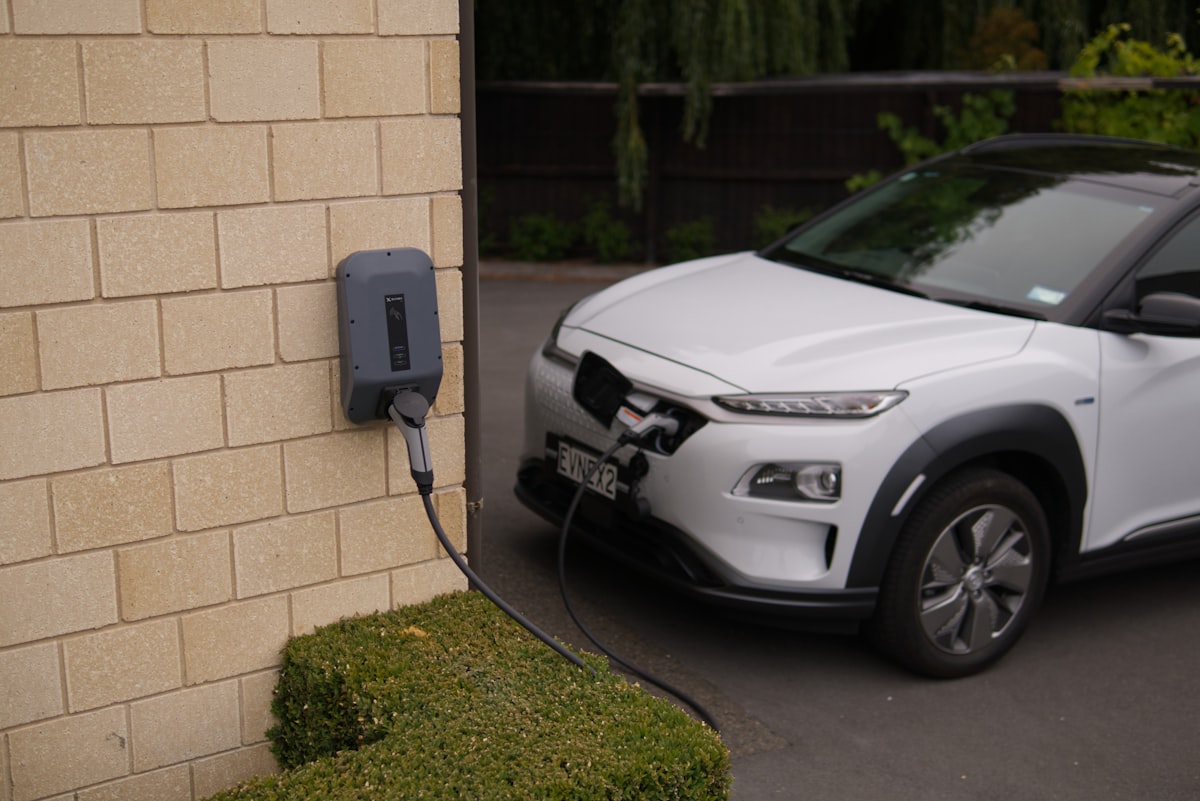The Future of Home EV Charging Technology
The Future of Home EV Charging Technology
Electric vehicles (EVs) are rising in popularity. The evolution of home charging technology is critical. Understanding the future of this technology helps homeowners stay ahead.
Charging Speeds and Efficiency
Advances in charging speed are necessary. Level 1 chargers use a standard home outlet, taking up to 24 hours for a full charge. Level 2 chargers, which use a 240-volt outlet, reduce this time significantly, typically taking 4-8 hours. Emerging technology is pushing this further. Ultra-fast Level 3 chargers (DC Fast Charging) can charge up to 80% in about 30 minutes. However, these are traditionally found in commercial settings. The challenge is adapting this tech safely and affordably for residential use.

Smart Charging and Energy Management
Smart charging solutions integrate with home energy systems. They optimize charging times based on energy rates and usage patterns. This approach reduces costs and minimizes strain on the grid. Apps provide real-time data and control. Users can schedule charging sessions during off-peak hours, saving money. Devices can adjust based on the load, preventing electrical overloads. Future advancements may combine solar panels with home chargers. This integration could use renewable energy and further cut costs.
Bidirectional Charging
One exciting development is bidirectional charging (V2G – Vehicle to Grid). V2G allows EVs to send power back to the grid or home. This technology turns an EV into a mobile power storage unit. During high demand or outages, the vehicle’s battery provides power. This could enhance energy independence and support grid stability. As technology and infrastructure develop, V2G could become a standard feature.
Wireless Charging
Wireless charging could simplify the process, eliminating the need for cables and plugs. Inductive charging pads placed on the garage floor transfer energy to the vehicle parked over them. Magnetic resonance is another method under development. It offers the potential for more efficiency and flexibility. Challenges include cost, energy loss, and alignment precision. Research continues to address these issues and improve the viability of wireless systems.
Integration with Smart Homes
Integration with smart home systems is increasingly important. Smart home ecosystems connect various devices, allowing seamless control and automation. EV chargers integrated into these systems provide enhanced functionality. They can communicate with home energy management systems and other IoT devices. This unification enhances efficiency and user convenience. Future systems may predict optimal charging times based on various factors like weather and energy use patterns.
Battery Advancements
Rapid advancements in battery technology affect home charging. Solid-state batteries promise higher energy density, faster charging, and increased lifespan. Their development could significantly impact the practicality and efficiency of home EV charging. These batteries are likely more expensive initially but may eventually become the standard. Increased energy capacity means less frequent charging, reducing strain on home systems and the grid.
Government Policies and Incentives
Supportive government policies and incentives play a crucial role. Grants, rebates, and tax incentives for home chargers encourage adoption. Updating building codes to facilitate easier installation helps too. Policymakers are pushing for infrastructure improvements and renewable energy integration. As policies evolve, they shape the direction of home EV charging technology.
Consumer Behavior and Market Trends
Consumer behavior drives market trends. More EVs on the road mean greater demand for home charging solutions. Automakers and tech companies respond with innovations. Consumer preference for sustainable and convenient solutions pushes technological advancements. Keeping an eye on market trends provides insight into future developments. Adaptation is key as consumer expectations evolve.
Infrastructure Challenges and Solutions
Current infrastructure poses challenges. Electrical capacity, grid stability, and accessibility are issues. Upgrading home electrical systems for higher-capacity chargers can be costly. Utilities are working on grid enhancements to support growing demand. Solutions include smart grids, decentralized power generation, and energy storage systems. Advances in these areas will support the widespread adoption of advanced home EV charging technologies.
Partnerships and Collaborations
Partnerships between automakers, tech companies, and utilities are fostering innovation. These collaborations accelerate the development of new technologies. They also facilitate smoother integration of EV charging solutions. Synergies from these partnerships lead to more holistic and user-friendly products. Increased cooperation among stakeholders is a positive trend.
Cybersecurity and Data Privacy
As home EV charging systems become smarter, cybersecurity and data privacy are concerns. Smart chargers collect and transmit data. Ensuring this data remains secure is essential. Measures include encryption, secure communication protocols, and regular software updates. Users and manufacturers must prioritize cybersecurity in this evolving landscape.
Cost Considerations
Cost remains a significant factor. While prices for EVs and related technologies are gradually decreasing, initial costs can be high. Economies of scale and technological advancements will likely reduce costs over time. Consumers should weigh the long-term benefits and savings when considering investments in home EV charging systems. Financial support from policies and incentives will continue to play a crucial role in adoption.
Environmental Impact
Environmental impact is a key consideration. EVs and home charging contribute to lower carbon emissions. Integrating renewable energy sources such as solar enhances this benefit. The production and disposal of batteries are other factors. Sustainable practices and advancements in green technology will mitigate these concerns, amplifying the positive environmental impact.

The Role of Education
Educational initiatives help consumers understand the benefits and usage of home EV charging technology. Providing accessible information on installation, usage, and maintenance is vital. Awareness campaigns and training programs can expedite the transition to home charging solutions. Educated consumers make informed decisions, driving market growth positively.
Interoperability and Standardization
Interoperability and standardization are crucial for widespread adoption. Creating universal standards for chargers ensures compatibility across different vehicle models and brands. This reduces consumer confusion and enhances user experience. Collaborative efforts by industry groups are driving progress in this area.
Entrepreneurial Opportunities
The evolving landscape presents entrepreneurial opportunities. Innovative startups can address gaps in the market. Services related to installation, maintenance, and energy management have high potential. Entrepreneurs can also explore new business models such as subscription-based services for home charging solutions. The dynamic market fosters creativity and innovation.
Long-term Vision
The vision for the future of home EV charging is promising. Continuous technological advancements will enhance efficiency, convenience, and sustainability. Collaborative efforts by various stakeholders will drive these innovations forward. Staying informed about these developments helps homeowners prepare for the future. Embracing these changes can lead to a smarter and more sustainable living environment.
Recommended EV Accessories
NOCO GENIUS10 Smart Charger – $79.95
Advanced battery maintainer and charger.
EV Charging Station Guide
Navigate the EV charging landscape.
As an Amazon Associate, we earn from qualifying purchases.




Subscribe for Updates
Get the latest articles delivered to your inbox.
We respect your privacy. Unsubscribe anytime.